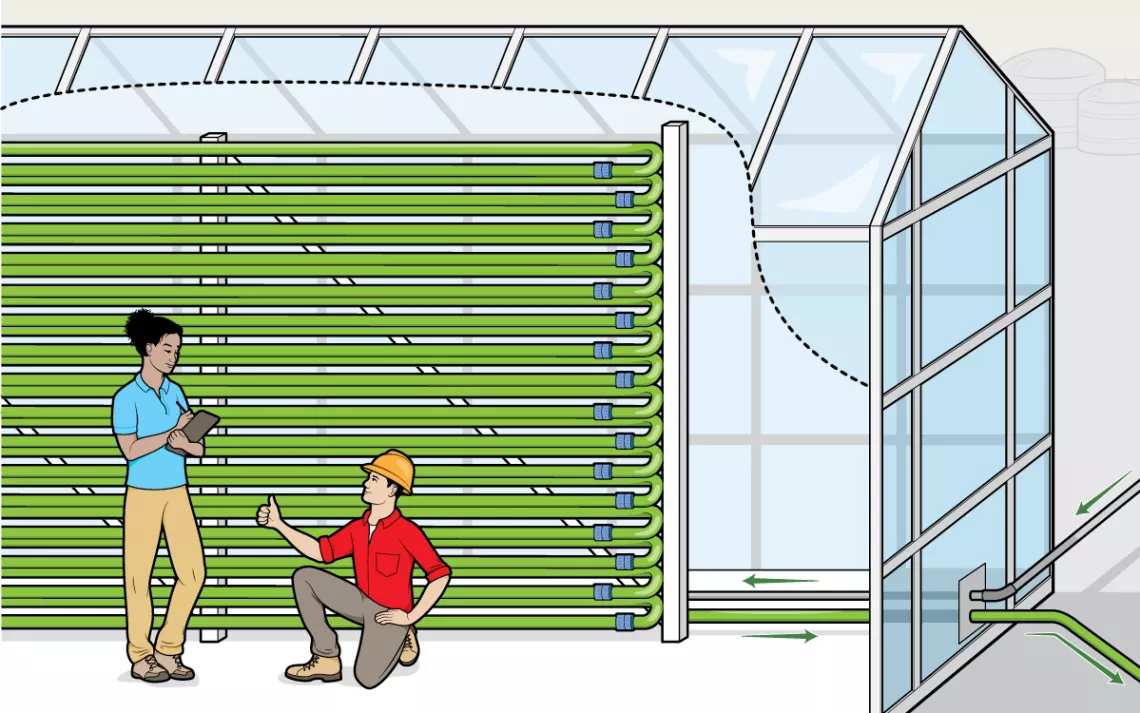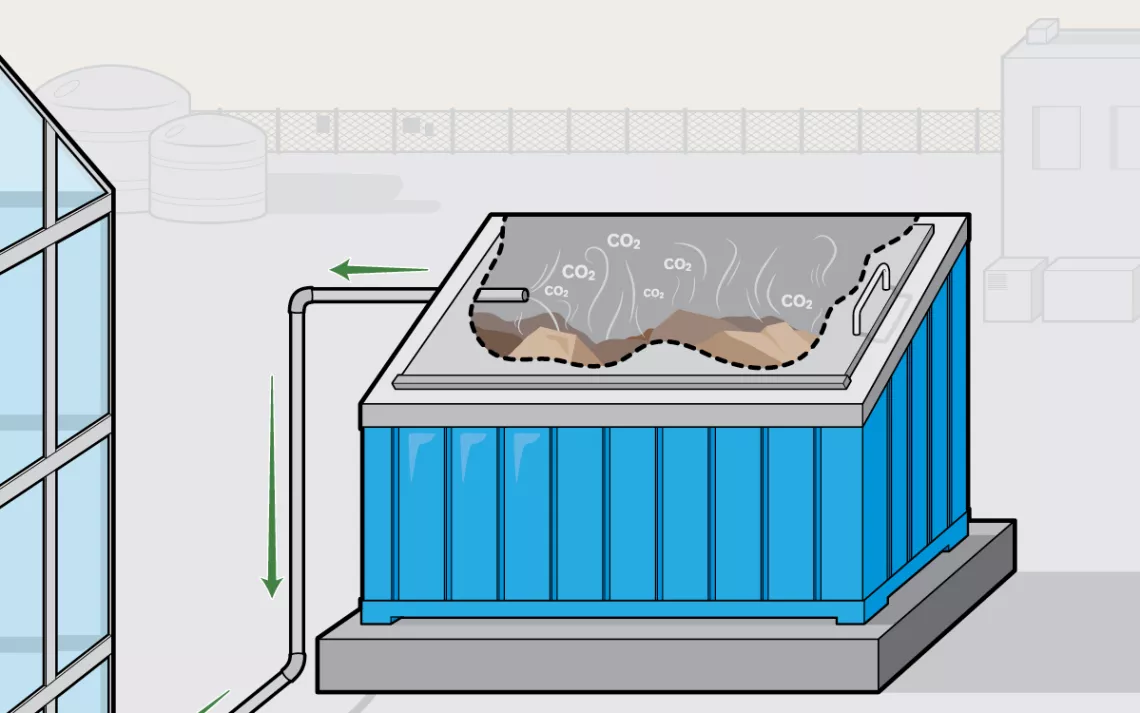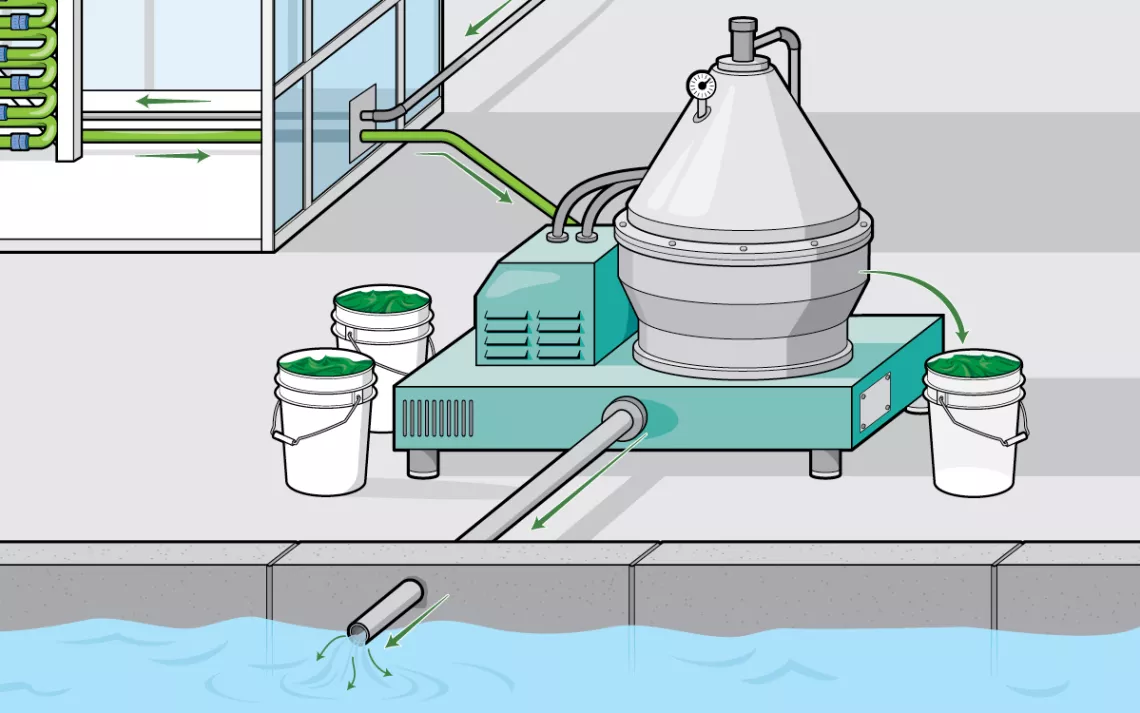Who You Gonna Call? Algae-Bloom Busters
A sewer plant in Utah is fighting algae with algae
Toxic algae are a threat to public health and aquatic wildlife. Rising temperatures and an influx of alga food from agricultural runoff, stormwater, and wastewater have accelerated the growth of these naturally occurring organisms, causing blooms of historic proportions.
Their otherworldly colors come with a warning: Unlike the stringy, forest-green algae that populate most slow-moving waterways, brightly colored algal blooms may produce toxins that kill fish and other animals. In waterways used for city water supplies, toxins have entered drinking water and sickened, or even killed, hundreds of US residents.
In Utah, sewer plants have been contributing to the size and frequency of algal blooms. The plants' discharge contains phosphorus, which sends algae into reproductive overdrive. The physical removal of phosphorus is costly, so one sewer plant, run by the South Davis Sewer District, hopes to use the algae themselves to treat discharge so it's clean enough not to trigger an algal bloom.

Infographic by Brown Bird Design
The South Davis Sewer District built a prototype of what it calls a "photobioreactor" or "vertical pond": more than 140 miles of glass pipes stacked on top of one another, primed with algae, and filled with the sewer system's not-quite-clean discharge. The algae eat the pollutants, primarily phosphorus, that would otherwise trigger algal blooms downstream.

The predator algae can't survive on phosphorus and water alone. To ensure adequate carbon for the algae, the sewer plant infuses the water in the photobioreactor with CO2. To keep costs low, it built an adjacent food-waste digester and captures the CO2 emitted by decomposing trash.

The clean water is released into the lake, while the algae are dried in a centrifuge and sold to make bioplastics and other algae-based products. Sewer-district managers hope the sale of the algae will offset the cost of the facility.
This article appeared in the January/February 2020 edition with the headline "Algae-Bloom Busters."
 The Magazine of The Sierra Club
The Magazine of The Sierra Club



